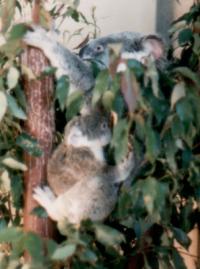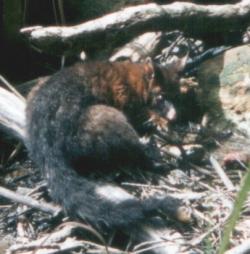|
Immunocontraception
The growing acceptance that so many current methods of population control are inhumane
or simply not viable for controlling such large numbers of animals has lead to the
development of a new form of
population control. Immunocontraception is a method of stimulating an animal to produce
antibodies against a reproductively important hormone or protein.
If it is possible to induce an immune response in an animal which will hinder one aspect
of their reproductive cycle, then this will effectively prevent pregnancy; or in some
cases, depending on the target, terminate the pregnancy. This method of population control
is also very appealing because of its ability to be species specific.
A problem when designing an immunocontraceptive is how to deliver it to the
population. Once a vaccine has been developed, it can be administered within a
laboratory
or to a small population either via intramuscular injection or oral delivery. However,
neither of these methods is any more efficient than a chemical (steroidal) contraceptive
because
the same contact with the animals is required. Immunocontraception can only become an
effective form of population control if a delivery system
which does not require contact with the animals is developed.
Delivery systems
- Plant Delivery. The three marsupial species currently in need of control are
all herbivorous, so one proposed delivery system is to insert an antigen
into a readily grown plant such as maize or carrots, and then use these food stuffs to
deliver the vaccine to the animal population.
- Viral Delivery, using a crippled virus.
In this case a virus which is specific to the target species would be engineered to carry
the gene for the immunocontraceptive antigen. The virus would be able to infect the animal
and stimulate the immune system to block reproduction; but it would be unable to spread
between animals.
The current situation
At the moment promising, preliminary laboratory trials have been undertaken by the Marsupial CRC
on all three of the above pest species, using either whole sperm or zona pellucida
as antigens. Work is also being undertaken to sequence genes found in the sperm and zona
pellucida so that more specific antigens can be prepared in the future. Although many targets have been achieved, much
more work needed before an effective method of population control will be
produced.
|













